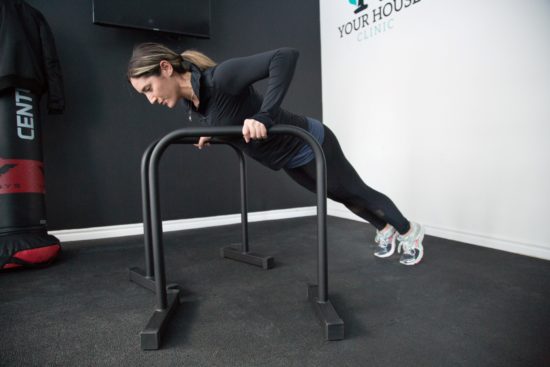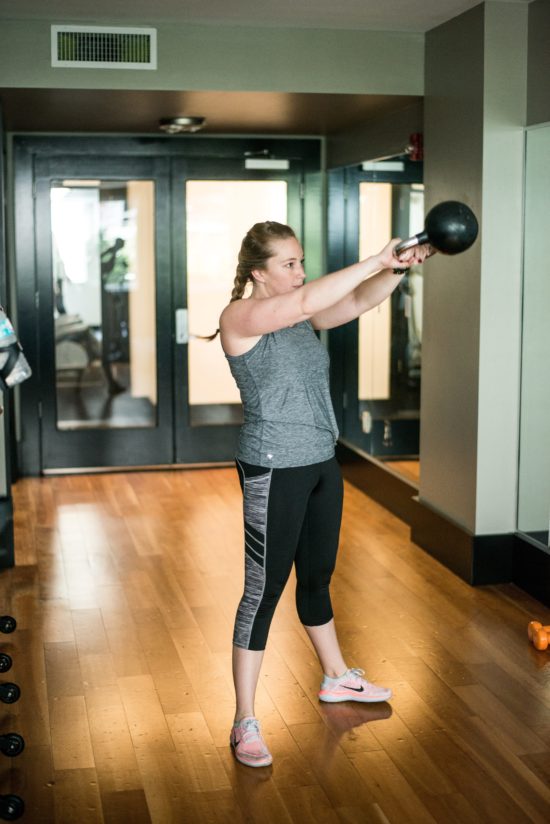This post may contain affiliate links to products or services which, if you purchase, may result in my earning commissions at no additional cost to you.

Are You Making These Mistakes with your High Intensity Interval Training?
High-intensity interval training (aka HIIT) is all the rage right now, and it’s no surprise why — this type of workout is loaded with benefits packed into a time-efficient session. The always-on-the-go American can now cram in a cardio-boosting and fat-burning workout into a slim time slot. HIIT studios continue to pop up throughout the country, and many gyms and yoga studios are now offering this type of workout as one of their class options.
HIIT combines high-intensity exercise intervals with low-intensity intervals or rest. Many HIIT programs also blend muscular strengthening intervals with cardio intervals. As long as high-intensity intervals are involved, you have the freedom to vary the duration, type, and intensity of the exercise in each interval when creating your own HIIT program.
The downside of this freedom? Many people are making some common HIIT training mistakes that can lead to a less beneficial workout or even a workout that can cause more harm than good. (Visit our injury and recovery section if you want to learn more about how to deal with an injury or how you can recover faster.)
No worries though, we won’t let you make the same mistakes! Read on to learn about the five most common mistakes in designing a HIIT program, so that you can make the most of your workouts.
HIIT Training Mistake #1: Not Progressing Gradually
We get it — with such a trendy new type of workout, it is easy to do too much, too soon. Hearing your friends rave about their last session and watching videos of people performing these sessions with apparent ease may lead us to jump on the bandwagon too quickly.
What’s really key to becoming fit from HIIT? Not getting hurt, of course! Start with a session that won’t leave you limping from soreness the next day, and continue to increase the intensity and/or length of these sessions gradually. Your muscles need time to recover in order to strengthen. Your immune system will also thank you for not jumping into a high-intensity exercise program without sufficient rest between each interval and each workout session.
Start your program by taking more rest intervals than work intervals, and then gradually increase the number of work intervals while decreasing the rest intervals approximately every two to three weeks.
Exercise physiologist and BodyBuilding.com contributor, Dr. Jim Stoppani, recommends an eight-week program that starts with a high-intensity:low-intensity (or rest) ratio of 1:4 for the first two weeks.
At the completion of each two-week period, Dr. Stoppani suggests reducing the low intensity/rest interval to half so that you are increasing the intensity gradually (Stoppani, 2019). This means that at the end of the eight-week program, the ratio of high-intensity:low-intensity (or rest) would be 2:1.
Stoppani also recommends starting the program for a duration of about 14 minutes and increasing about 1-2 minutes each week so that you have gradually increased the overall duration to 20 minutes by the end of the eight-week program (Stoppani, 2019).
HIIT Training Mistake #2: Not Enough Resistance Training

Many people who practice HIIT become so focused on the cardio that they forget to incorporate intervals focused on building muscular strength.
Make the most out of your time by including both resistance training and cardio into your session. The resistance training will improve muscular strength and endurance, while the cardio will help you achieve a healthy weight, lung capacity, and a healthy heart.
Instead of confining yourself to one machine (such as the rower or treadmill) the entire time, give your whole body a better workout (and increase the fun!) with the addition of resistance-based exercises.
Adding high-intensity, resistance-based exercises such as hip-thrusters, push-ups, TRX rows, and lunges to your workout is a great way to increase muscular endurance and strength (check out our favorite TRX bundle on Amazon). Substitute some of these exercises into your usual high-intensity intervals next time for whole-body benefits.
HIIT Training Mistake #3: Not Resting Between Sessions
It’s easy to adopt a “go-go-go” attitude when doing a HIIT workout, but this type of mindset may do more harm than good.
Imagine running a race at your maximum capacity each day. Each day, as your body and muscles become more fatigued, your race times will get slower. Doing HIIT sessions without rest intervals would have the same sort of effect, causing increased injury risk and decreased performance as your body and muscle fatigue.
As mentioned earlier in this article, we recommend starting your HIIT training with more rest/low-intensity intervals, and then gradually decreasing the amount of these rest/low-intensity intervals every two to three weeks so that you end with a 2:1 high-intensity:low-intensity ratio for some of your workouts. Once you build a solid base, vary the rest to intensity ratios so that your fitness never dwindles as a result of repeating the same type of workout and stimulus.
It is important to keep rest intervals in your training so that you minimize the risk of injury and maximize the efficiency of your session. Taking a complete rest or doing a low-intensity exercise (such as walking or light jogging) will allow you to power through the session while keeping good form in your exercises.
HIIT Training Mistake #4: Not Organizing Your Exercises Safely

Photo by Lindsey Saenz on Unsplash
While it’s great to have a variety of exercises in your HIIT routine, not organizing them safely can increase your risk of injury. Exercises that require great attention to posture in order to avoid injury should not be added toward the end of a session.
It may not be a wise idea to add a risky exercise such as kettlebell swings late into the session when your body is tired and you may not be thinking as clearly due to fatigue. Performing this type of exercise with a tired body and mind can lead to disaster.
Organize your workout so that the swinging of heavy objects and lifting of heavy weights remain in the beginning phases of your session. Later into the session, opt for exercises that won’t end in catastrophe if not performed with perfect form or alertness.
And finally, never neglect a proper warmup and cool down!
HIIT Training Mistake #5: Not Mixing up Your Sets and Reps
Variety is the spice of life, and mixing up your sets and reps is crucial to spice up the benefits of your workout.
Instead of working the same muscles over and over (which can cause muscular imbalance and increased injury-risk), mix up your sets, reps, load, exercise type, and rest type/duration of rest.
Mixing up your routine will prevent injury and your fitness from plateauing. While you get fitter, performing the same workout over and over with the same rest periods will eventually cause your fitness to remain at a standstill instead of continuing to improve.
Some ways you can mix it up include varying your routine some days, adding more weight and fewer reps, fewer reps and more weight, performing different types of exercises to work different muscles, and shortening or lengthening your rest time.
For example, you might choose to perform 20 sets of 30 seconds hard by 30 seconds rest one day, and then perform 10 sets of one minute hard by one-minute rest or two sets of five minutes all-out the next day.
Adding variation to your routine will ensure better overall fitness.
Enjoy Your Improved HIIT Workout
Now that you know the common mistakes in designing a HIIT workout, you can design yours, flawlessly! Whether you’re only doing your workout for five minutes or breaking a sweat for an hour, you will make the most out of your time by avoiding these five common mistakes in designing a HIIT workout.
Now, go on and get fit with HIIT!
About the Author: Dr. Scott Gray is the founder of Back In Motion Sport & Spine Physical Therapy, SW Florida’s leading physical therapy clinic for orthopedic, sport, and spine injuries. He is also amongst the highly rated sciatica treatment in the region.




